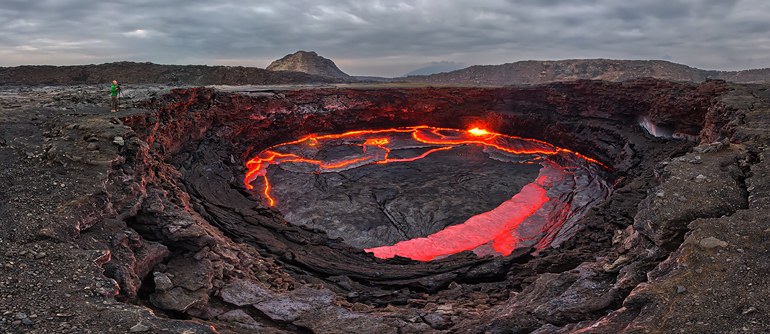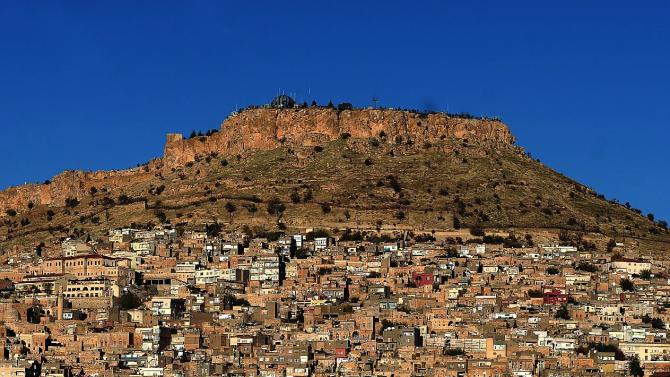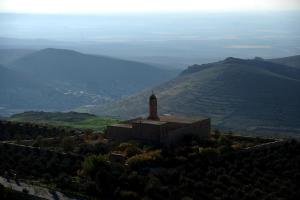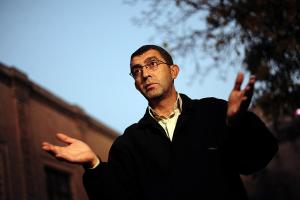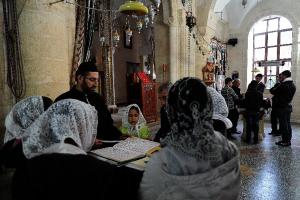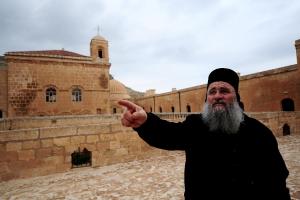Πρόεδρος Της Τουρκίας Μιλώντας Σαν Χαλίφη
Μπαράκ Ομπάμα δεν είναι ο μόνος πρόεδρος που χρησιμοποιεί την πολιτική της διαίρεσης. Εκτός από το δόσιμο δυτικά έθνη έναν ακόμη λόγο για να κλωτσήσει την Τουρκία από το ΝΑΤΟ, της εν λόγω χώρας Πρόεδρος της Τουρκίας Ρετζέπ Ταγίπ Ερντογάν ηχεί περισσότερο σαν ένα χαλίφη. Ενώ δίνοντας μια ομιλία στην Κωνσταντινούπολη, ο Ερντογάν ζήτησε την ενοποίηση των μουσουλμανικών χωρών κατά της Δύσης.
Ομιλία του Ερντογάν περιλάμβανε επίσης ένα σημαντικό ποσό της υποκρισίας:
"Ξένοι" δεν είναι σε θέση να λύσει τα προβλήματα της Μέσης Ανατολής, επειδή δυτικές πολιτείες "δεν μας αρέσει" και ενδιαφέρονται περισσότερο για μόλις μετά από τα μετρητά, ο Πρόεδρος της Τουρκίας Ρετζέπ Ταγίπ Ερντογάν δήλωσε στις 27 Νοεμβρίου."Μόνο εμείς μπορούμε να λύσουμε τα προβλήματά μας. Μιλάω ανοιχτά? ξένοι αγαπούν το πετρέλαιο, χρυσό, διαμάντια, και το φθηνό εργατικό δυναμικό του ισλαμικού κόσμου. Τους αρέσει τις συγκρούσεις, καυγάδες και αντιπαραθέσεις της Μέσης Ανατολής. Πιστέψτε με, δεν μας αρέσει », δήλωσε ο Ερντογάν κατά τη διάρκεια ομιλίας στη μόνιμη επιτροπή για την οικονομική και εμπορική συνεργασία του Οργανισμού Ισλαμικής Συνεργασίας (COMCEC) στην Κωνσταντινούπολη.«Μοιάζουν με τους φίλους, αλλά θέλουν να μας νεκρούς, τους αρέσει να βλέπουν τα παιδιά μας πεθαίνουν. Πόσο καιρό θα σταθεί το γεγονός αυτό; », πρόσθεσε.Ο Ερντογάν ανέφερε ότι οι χώρες της Μέσης Ανατολής θα μπορούσαν να λύσουν τα προβλήματά τους από μόνοι τους χωρίς καμία βοήθεια από τη Δύση.«Η μόνη προϋπόθεση για να ξεπεραστεί η κρίση στον ισλαμικό κόσμο είναι η ενότητα, η αλληλεγγύη και η συμμαχία. Πιστέψτε με, μπορούμε να επιλύσουμε κάθε πρόβλημα εφ 'όσον είμαστε ενωμένοι. Οι ισλαμικές χώρες, οι οποίες έχουν αναπτυχθεί οικονομικά πρόσφατα, βιώνει τη μεγαλύτερη ανθρωπιστική και πολιτική κρίση της ιστορίας τους ταυτόχρονα ", δήλωσε ο Τούρκος πρόεδρος.«Αν δράσουμε από κοινού, εμείς θα τελειώσει η μοναξιά της Παλαιστίνης η οποία συνεχίζεται εδώ και σχεδόν έναν αιώνα ... Είναι δυνατόν να τερματιστεί η αιματοχυσία στο Ιράκ και τη δολοφονία της Συρίας παιδιά αν ενωθούμε », είπε.
Όλα αυτά από έναν πρόεδρο ο οποίος αρνείται να κάνει τίποτα γι 'ISIS, το πιο άγριο ταινία των αδελφών στη σύγχρονη ιστορία. Μιλώντας του ISIS, συνεχίζει να εξαπλώνεται σε όλη την βόρεια Αφρική. Όπως Shoebat.com έχει αναφερθεί, αυτό εξυπηρετεί όλα τα συμφέροντα της Τουρκίας σε ένα νέο χαλιφάτο.
Έκκληση του Ερντογάν για τη μουσουλμανική ενότητα δεν είναι μόνο για σκασίματα μουσουλμάνους εναντίον της Δύσης. Είναι επίσης για την υπονόμευση της ISIS, το νόμιμο χαλιφάτου. Ο Ερντογάν χρησιμοποιεί ISIS για να συνεχίσει το έργο που έχει κάνει το ΝΑΤΟ σε μέρη όπως η Λιβύη κατά τη διάρκεια της «Αραβικής Άνοιξης», αλλά ο ίδιος δεν θα αποδεχθούν μια ISIS Χαλιφάτου.
Ωστόσο, ο ίδιος θα είναι πολύ ευχάριστη θέση να υποτάξει ISIS σε ένα οθωμανικό χαλιφάτο. Η έκκλησή του για τους μουσουλμάνους να ενωθούν ποτέ τόσο διακριτικά υπονομεύει Αμπού Μπακρ αλ-Μπαγκντάντι, ο οποίος παίζει χαλιφάτο μικρή μπάλα.
Όσον αφορά Ερντογάν θρηνούν αγάπης πετρέλαιο, χρυσό και διαμάντια «ξένων» ... Έχετε δει την κατοικία του;
k

AA Photo
“Only we can solve our problems. I speak openly; foreigners love oil, gold, diamonds, and the cheap labor force of the Islamic world. They like the conflicts, fights and quarrels of the Middle East. Believe me, they don’t like us,” said Erdoğan during an address to the Standing Committee for Economic and Commercial Cooperation of the Organization of Islamic Cooperation (COMCEC) in Istanbul.
“They look like friends, but they want us dead, they like seeing our children die. How long will we stand that fact?” he added.
Erdoğan said Middle Eastern countries could solve their problems by themselves without any help from the West.
“The only condition to overcome the crisis in the Islamic world is unity, solidarity and alliance. Believe me, we can resolve every problem as long as we are united. Islamic countries, which have developed economically recently, have been experiencing the biggest humanitarian and political crisis in their history simultaneously,” the Turkish president said.
“If we act together, we will end the loneliness of Palestine which has continued for nearly one century ... It is possible to end the bloodshed in Iraq and killing of Syrian children if we unite,” he said.
‘Ego complex’
He also savaged critics of his remarks that Muslim explorers traveled to the Americas before Columbus as suffering from an “ego complex,” reaffirming his belief their purported feat was an historical fact.
“I have been the target of heavy criticism by the Western media. Just because I repeated a fact based on scientific research, I have been targeted by the Western media, as well as the foreigners within who suffer from an ego complex,” he said.
Erdoğan stirred controversy earlier this month by declaring that the Americas were discovered by Muslims in the 12th century, nearly three centuries before Christopher Columbus sailed across the Atlantic. He did not elaborate as to why the claim is only found in some obscure sources and is not known more widely.
Erdoğan insisted the criticism was aimed at preventing Muslims from “questioning anything.”
“They have been very disturbed by the fact that we have reminded them of some historical facts, the history of civilization, science, politics and war. They don’t want us to question anything,” he said.
Erdogan cited as evidence the claim that “Columbus mentioned the existence of a mosque on a hill on the Cuban coast,” and asked to build a mosque at the site mentioned by the Genoese explorer.
Most history books say Columbus set foot on the American continent in 1492 as he was seeking a new maritime route to India. A tiny minority of Muslim scholars have recently suggested a prior Muslim presence in the Americas, although no pre-Columbian ruin of an Islamic structure has ever been found.
In a controversial article published in 1996, historian Youssef Mroueh referred to a diary entry from Columbus that mentions a mosque in Cuba. But the passage is widely understood to be a metaphorical reference to the mosque-like shape of the landscape.
November/27/2014





